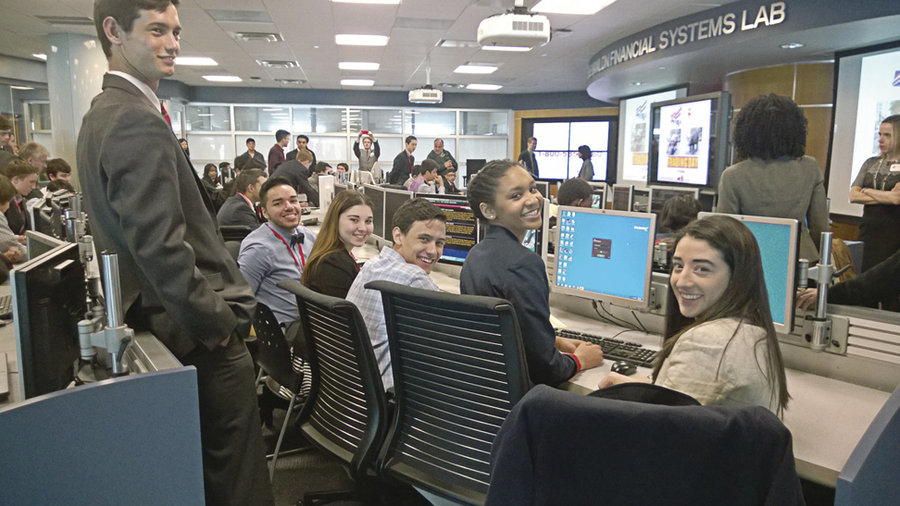The rules of investing are simple: Buy low, sell high. In a positive (“bull”) market, the prices of stocks are rising, which should encourage buying. In a bear market, prices are falling and downward spiraling encourages more selling.
With this in mind, several New Jersey high school students, abounding with solid business knowledge, recently competed in a simulated Wall Street stock market trading experience that mimicked what one would see at The New York Stock Exchange after the ringing of the opening bell at 9:30 a.m.
Teams of five from 20 top high schools – including Weehawken High and Hoboken High – had 90 minutes to decide which stocks they wanted to buy with virtual money. The objective was clear: make more profit with the million dollar portfolio than any other team while working inside the soundproof walls of Hanlon Financial Systems on the Stevens Institute of Technology campus.
Bronx Science placed first in the completion. Weehawken High School did not take home a trophy, but they did take home something they couldn’t carry – the ability to focus on a seemingly insurmountable goal without getting distracted. The Weehawken team, academically advanced juniors, brushed up on market trends prior to the competition.
They didn’t have a captain. Instead, each student held his or her own weight and was expected to contribute. Neidelyn Pina, Celeste Godoy, Dylan Henry Michaela Cruciani and Sebastian Solano participated in the event.
The students were selected by the school’s guidance counselor/anti-bullying specialist, Francesca Amato. She knows each of these students personally and was positive that they would rise to the occasion under pressure.
Teamwork!
Neidelyn Pina, focusing on business-related courses at Weehawken High School, was completely humbled by the experience and she hopes to come back next year to surpass this year’s end result.
“It gave us a lot of experience on how to work as a team and everyone got along well,” she explained.
“We trusted each other and we each had to use our strengths so that we could offer each other the best options possible,” said Celeste Godoy.
Elaborating on what they had learned, Dylan Henry, proud to be on the Weehawken team, admitted, “It is not easy picking a few good stocks. Let’s say if you like Google or Apple, it could fluctuate during our timeframe. In the beginning it could be moving well, but then it could fall at the end of our session.”
The head of Stevens’ Investment Club said, “Compiling, researching and entering data into an expensive modern, sophisticated computer system that cost thousands of dollars for each terminal is something everyone doesn’t get the opportunity to do. And when these teens get to the college level, there will be statewide and national competitions similar to this one where leadership skills are put to the test. If they are in Phi Beta Lambda, they will have support from like-minded peers who are thinking about career goals by now and how they are going to achieve them.”
A view of the future
One of the most helpful aspects of the day was a lecture on what students could expect if they plan to apply to Stevens. In order to alleviate the element of surprise that appears when college application time rolls around, students received an overview of Stevens’ basic college acceptance requirements, including GPA and SAT minimums.
“It’s hard to get into college these days, so this was a great experience for anyone thinking about going to a prestigious school like Stevens,” said Michaela Cruciani, a Weehawken team member.
Sharing his personal impressions of the competition, Charles Drake, a Stevens student from South Carolina who has been serving as Weehawken’s student ambassador, said, “The stock market is constantly moving, like water. The growth pattern of a favored company is hard to analyze and choosing stocks based on what is happening in the economy takes time to research. To get a handle on everything in 90 minutes is very challenging.”
